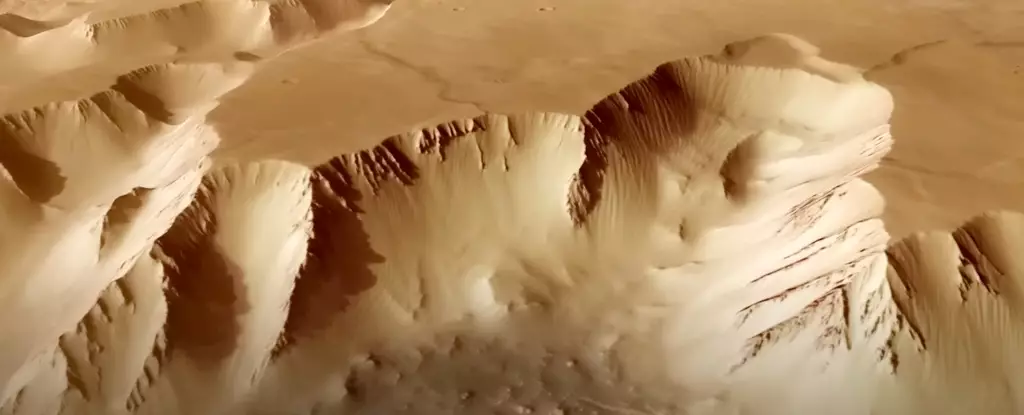Mars has long captivated the imagination of scientists and space enthusiasts alike. Among its many intriguing features, the Noctis Labyrinthus stands out as a captivating location for exploration and scientific study. This labyrinthine region is situated between the Valles Marineris canyon system and the imposing Tharsis Bulge’s colossal volcanoes. Thanks to the Mars Express spacecraft’s meticulous mapping efforts, we now have the opportunity to witness the mesmerizing landscape of Noctis Labyrinthus through a stunning animation composed of thousands of high-resolution images captured by the spacecraft’s cameras.
Noctis Labyrinthus stretches across almost 1,200 kilometers, comprising a shattered and labyrinthine system of valleys. However, this intricate terrain did not come into existence overnight. It owes its existence to the geological forces at work in the Tharsis Rise region. Volcanic activity in the Tharsis region led to the creation of a bulge, which, in turn, exerted significant tectonic stresses on the surrounding areas. As a result, the crust thinned, giving rise to structures known as “grabens,” or trenches, which settled as the crust extended.
Embarking on a virtual flyover of Noctis Labyrinthus offers viewers a unique opportunity to travel back in time. The highest plateaus visible in the animation represent the original surface level of Mars before tectonic activity and erosion transformed the landscape. The intersecting canyons and valleys, seemingly small in the animation, can actually reach widths of up to 30 kilometers and depths of six kilometers. Over millions of years, enormous landslides have cascaded down the slopes, burying older surface units beneath them. Additionally, the slopes of the valleys showcase vast dune fields formed by the relentless Martian winds carrying and depositing sand across the surface.
An analogy can be drawn between this fascinating flyover of Noctis Labyrinthus and soaring over and through Earth’s awe-inspiring Grand Canyon. Both journeys reveal the intricate geological history by examining the cross-cutting fracture zone at their core. The Mars Express spacecraft used a high-resolution movie camera to capture the surface, resulting in a mesmerizing video showcasing the complexity of Mars’s ancient terrain. Each second of the video consists of 50 separate frames rendered along a pre-defined camera path, providing an immersive experience for viewers.
While the animation captures the ancient geological story of the Martian landscape, it also pays homage to the Mars Express mission itself. The opening credits of the video, featuring a rotating Mars globe, were created using the recent 20-year Mars global color mosaic. In order to enhance the visual appeal and conceal the limitations of the terrain model, a haze effect was added starting at a distance of approximately 150 to 200 kilometers from the camera’s perspective. The video is centered at the Martian coordinates of 7°S, 265°E, allowing viewers to immerse themselves in the unique geographical features of Noctis Labyrinthus.
The Mars Express spacecraft continues to provide invaluable insights into the mysteries of the Red Planet. Its meticulous mapping efforts, combined with advanced visualization techniques, offer scientists and space enthusiasts alike the chance to explore and analyze the many wonders of Mars. As we journey through the virtual flyover of Noctis Labyrinthus, we gain a deeper understanding of the geological processes that shaped Mars, as well as the potential for future human exploration and scientific endeavors on this enigmatic planet.
The Mars Express spacecraft’s animation of Noctis Labyrinthus provides an enthralling glimpse into the secrets of Mars. By combining thousands of images captured by the spacecraft’s cameras, the animation showcases the intricate valleys, canyons, and dune fields that make up this captivating region. This virtual journey through time and space offers a unique perspective on the geological history of Mars and ignites our curiosity about the possibilities for future exploration. As we continue to unlock Mars’s secrets, the mysteries of the Red Planet gradually unfold, revealing a world waiting to be explored and understood.


Leave a Reply